 These photos, taken by Farm Security Administration photographer Arthur Rothstein, show cowboys and dudes from the Quarter Circle U Ranch in Big Horn County, Montana as they gather their herds for the seasonal roundup.
These photos, taken by Farm Security Administration photographer Arthur Rothstein, show cowboys and dudes from the Quarter Circle U Ranch in Big Horn County, Montana as they gather their herds for the seasonal roundup.
Roundups were held within a specific rangeland area and were not used to move cattle from one point to another. Instead, roundups were the process of gathering and collecting all the cattle grazing in that specific area. Roundups took place twice a year, in the spring and in the fall.
The spring roundup was the opportunity to gather all the calves together to get them branded and counted so a rancher knew an estimate of how many calves were born that year. In addition to branding, the cowboys separated the market-age steers (called “beeves”) to be sold.
The fall roundups were primarily used to determine which of the steers were ready to ship out to sell to the meat packing plants.
The time it took to complete a roundup varied, depending on the acreage which needed to be ridden by the cowboys to find all the cattle.

Hereford bulls.
A roundup required a number of specialized skills on the part of both cowboys and horses. Individuals who separated cattle from the herd required the highest level of skill and rode specially trained “cutting” horses, trained to follow the movements of cattle, capable of stopping and turning faster than other horses.
Once cattle were sorted, most cowboys were required to rope young calves and restrain them to be branded and (in the case of most bull calves) castrated. Occasionally it was also necessary to restrain older cattle for branding or other treatment.
A large number of horses were needed for a roundup. Each cowboy would require three to four fresh horses in the course of a day’s work. Horses themselves were also rounded up.
It was common practice in the west for young foals to be born of tame mares, but allowed to grow up “wild” in a semi-feral state on the open range. There were also “wild” herds, often known as mustangs.
Both types were rounded up, and the mature animals tamed, a process called horse breaking, or “bronco-busting”, (var. “bronc busting”) usually performed by cowboys who specialized in training horses.

A cowboy ropes a calf for branding.
The historic American cowboy of the late 19th century arose from the vaquero traditions of northern Mexico and became a figure of special significance and legend.
A subtype, called a wrangler, specifically tends the horses used to work cattle. In addition to ranch work, some cowboys work for or participate in rodeos.
Cowgirls, first defined as such in the late 19th century, had a less-well documented historical role, but in the modern world work at identical tasks and have obtained considerable respect for their achievements.
The cowboy has deep historical roots tracing back to Spain and the earliest European settlers of the Americas. Over the centuries, differences in terrain and climate, and the influence of cattle-handling traditions from multiple cultures, created several distinct styles of equipment, clothing, and animal handling.
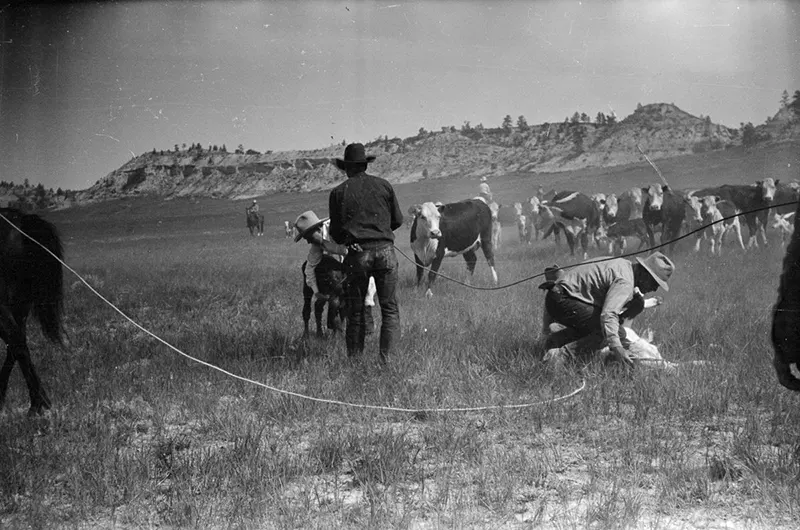
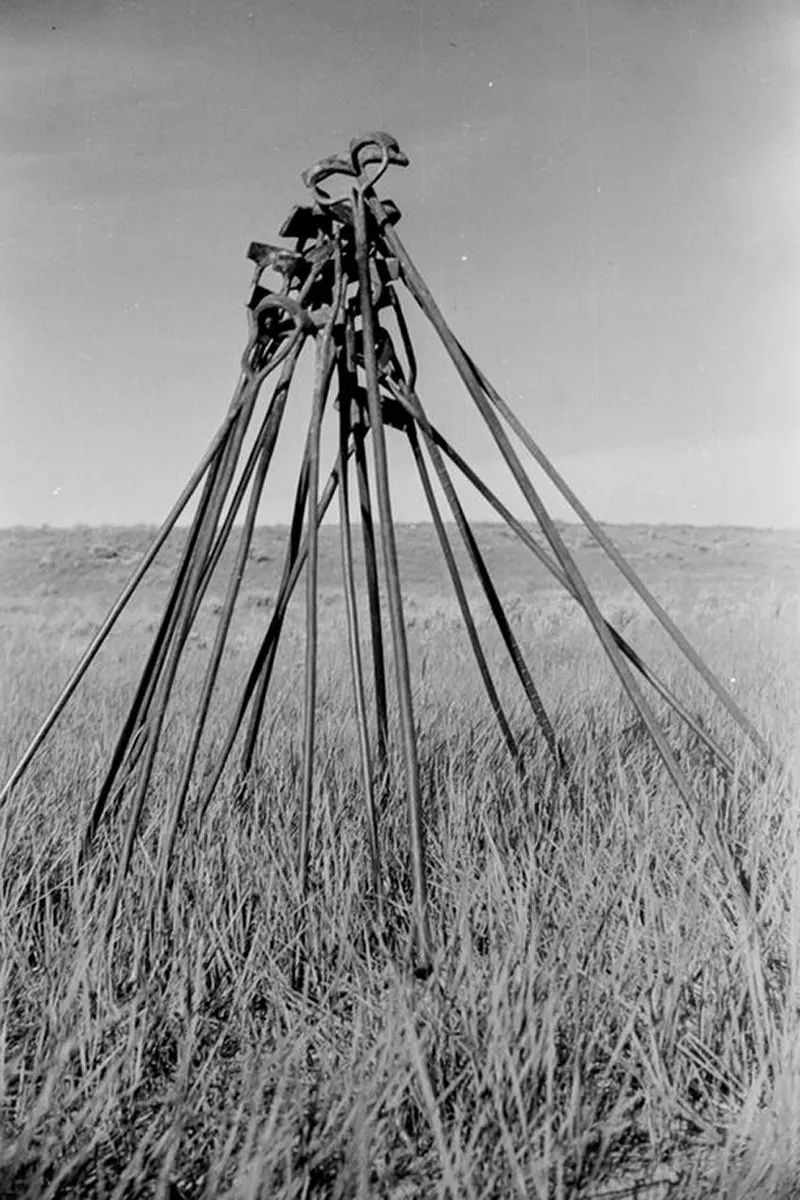
Branding irons.
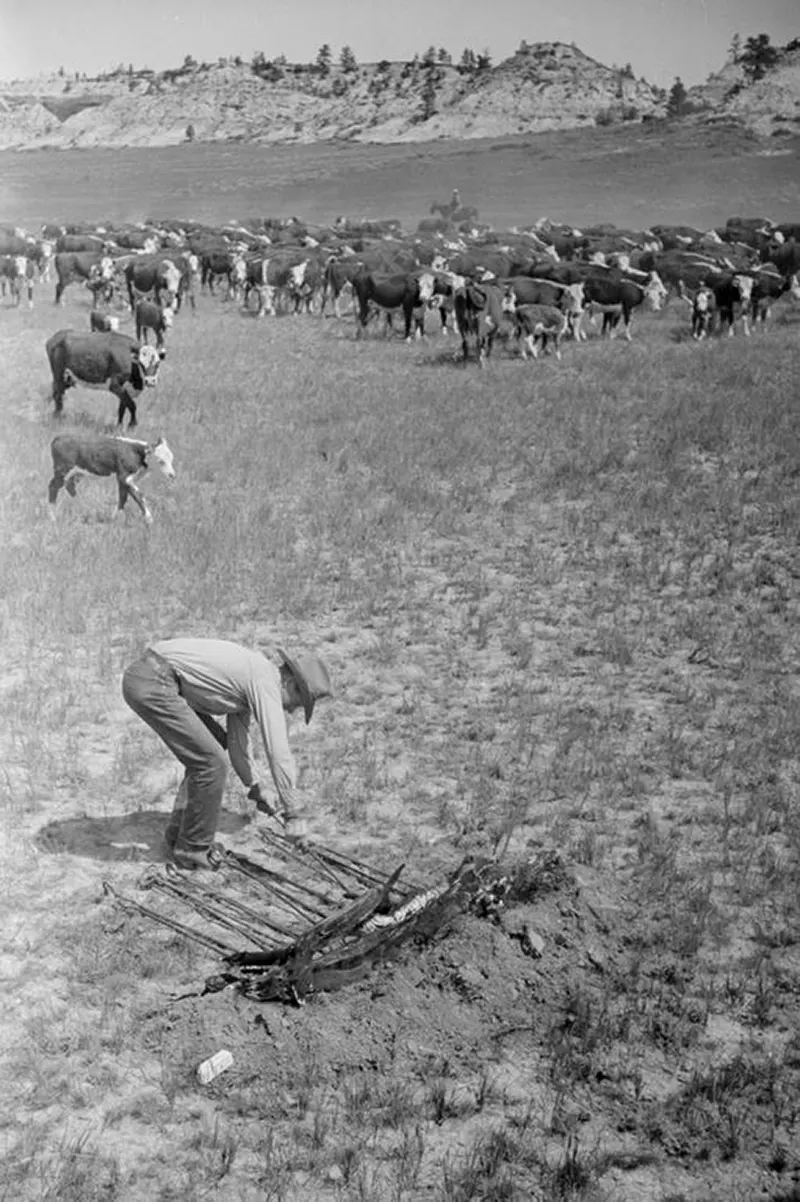
A cowboy heats branding irons in a fire.
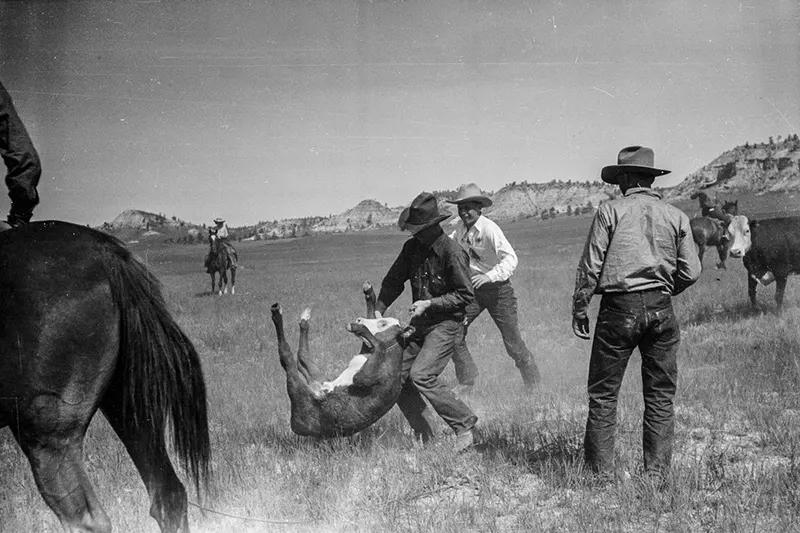

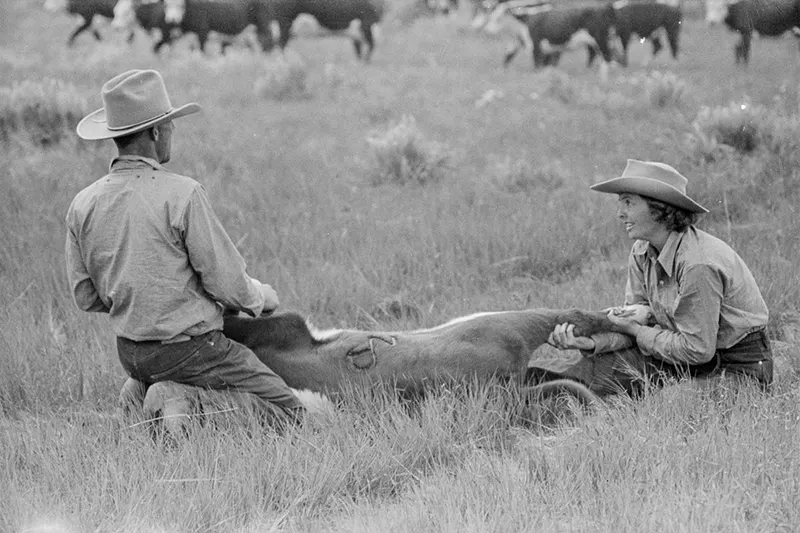

A dude helps immobilize a calf for branding.

Branding complete, she gives water to the calf.
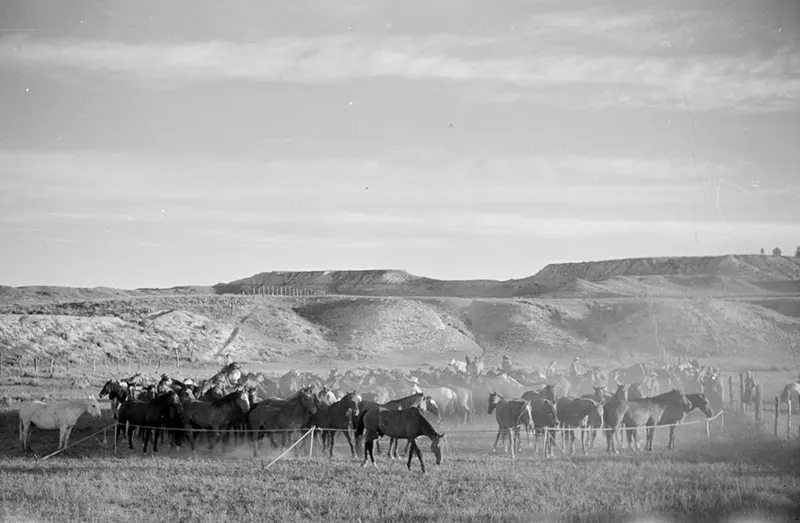
Horses are rounded up into a rope corral.
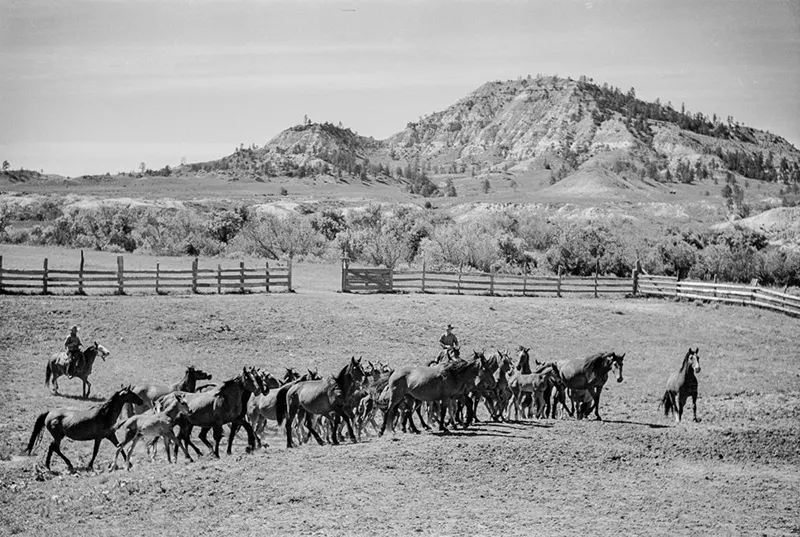
Cowboys drive colts into a roundup corral.

Cowboys rope a colt as dudes look on.
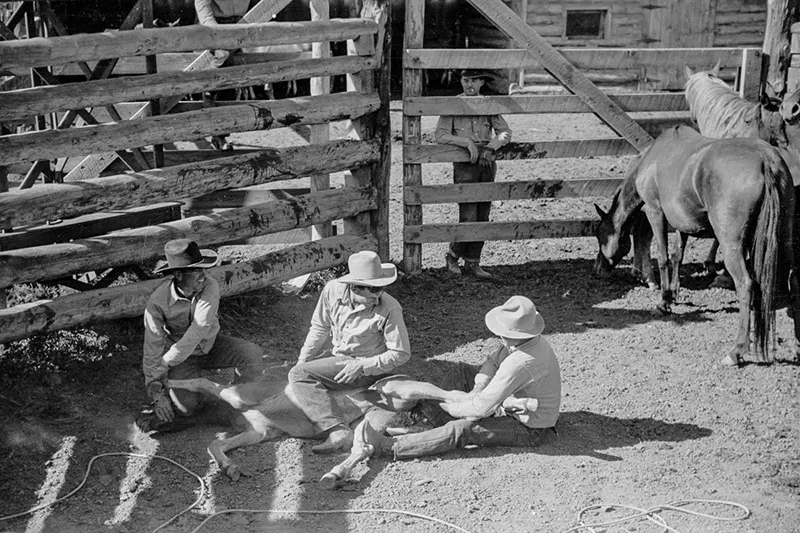
Cowboys prepare a colt for branding.
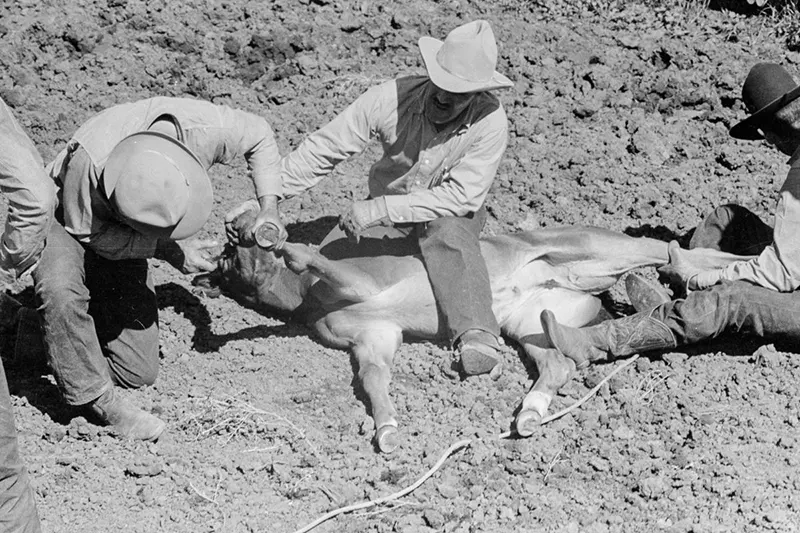
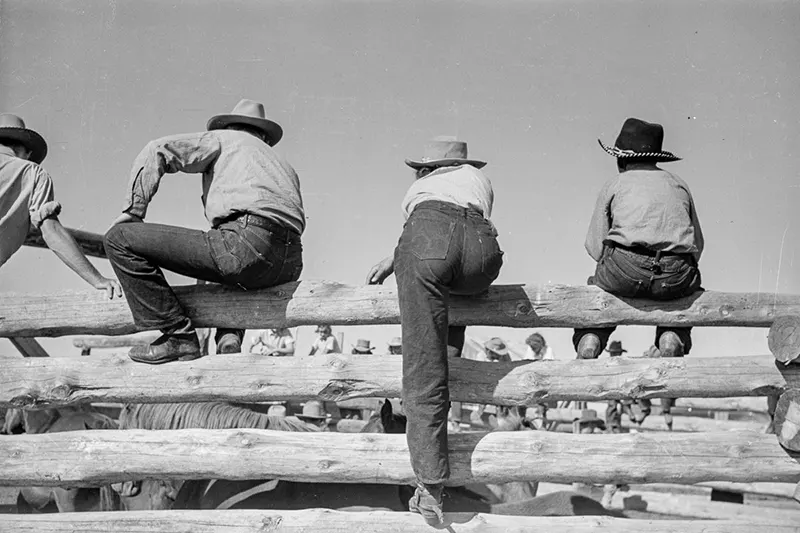

A cowboy prepares a syringe to immunize livestock against blackleg.

Blackleg is an infectious bacterial disease that is highly fatal to young cattle.


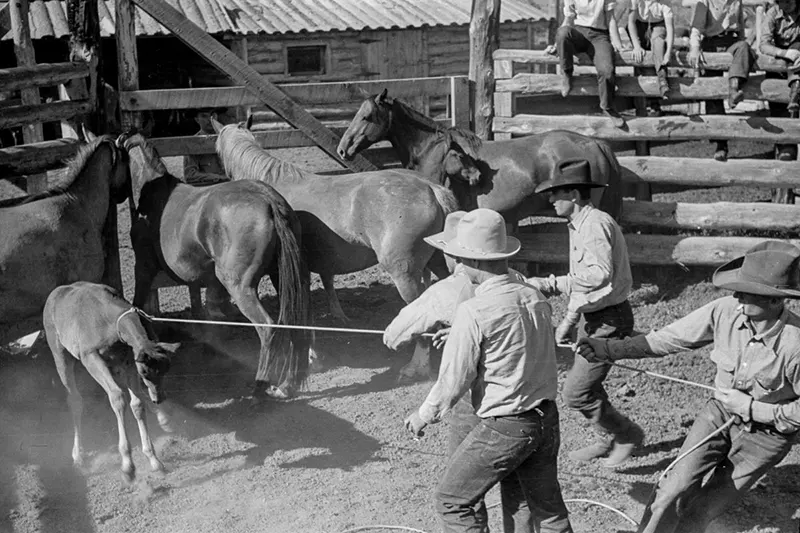
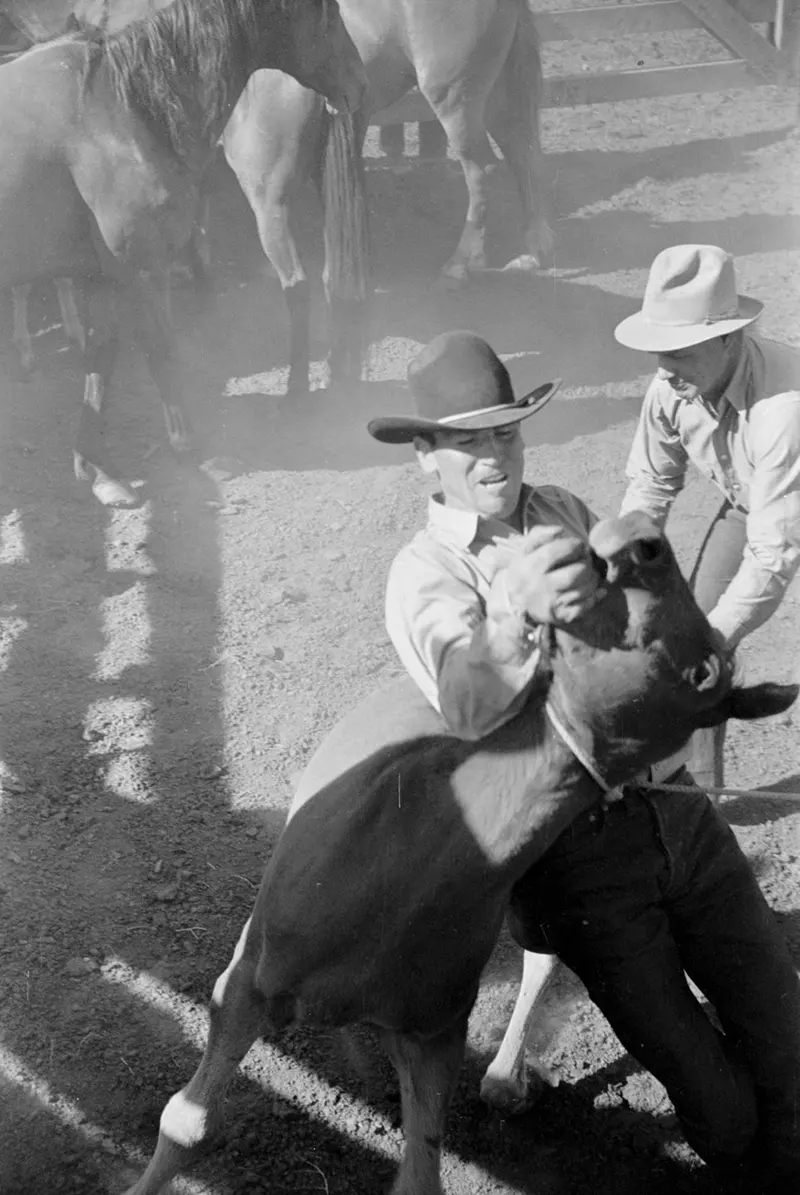


A cowboy records the action with an amateur movie camera.

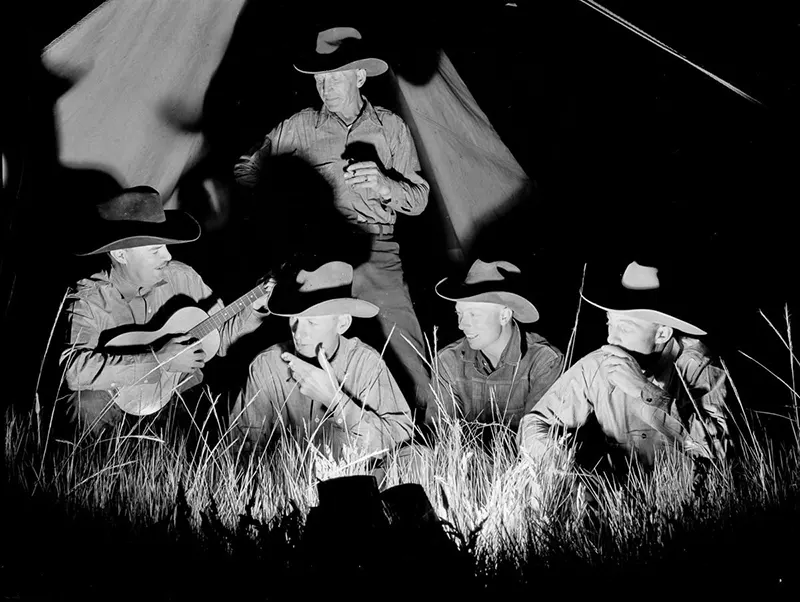
Cowhands unwind after a day’s work.
